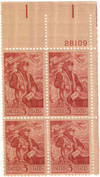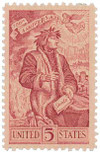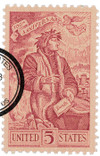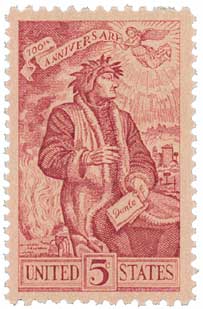
# 1268 - 1965 5c Dante Alighieri
5¢ Dante Alighieri
City: San Francisco, CA
Quantity: 115,340,000
Printed by: Bureau of Engraving and Printing
Printing Method: Rotary Press
Perforations: 10 1/2 x 11
Color: Maroon on tan paper
Death Of Dante Alighieri
The author was born Durante di Alighiero Degli Alighieri around the year 1265 in Florence, present-day Italy. Not much is know about his early education, but it’s believed he received some formal education in grammar, language, and philosophy at one of the schools in Florence.
When he was nine years old, Dante claimed it was love at first sight upon seeing a girl named Beatrice. However, his parents had arranged his marriage to Gemma Donati. In his teens, he took an interest in writing and apprenticed with Brunetto Latini who introduced him to other Florentine poets. Dante entered the University of Bologna in 1287, but left two years later to join the Florentine army and fight in the Battle of Campaldino.
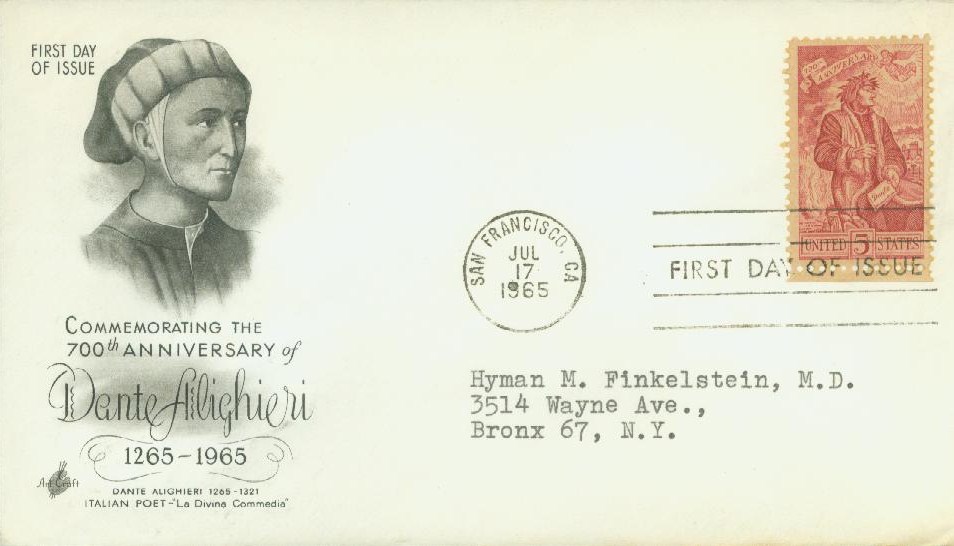
Though he had married Gemma in 1285, Dante still carried a torch for Beatrice. Her death in 1290 had a profound effect on him. He fully embraced Christianity and extensively studied the philosophical works of Boethius, Cicero, and Aristotle. He also began producing a significant amount of poetry, establishing his own unique poetic voice. Dante also became involved in the city’s politics, which were embroiled in a war between the White Guelfs and the Black Guelfs. Siding with the White Guelfs, Dante was eventually exiled to Verona and later Ravenna.
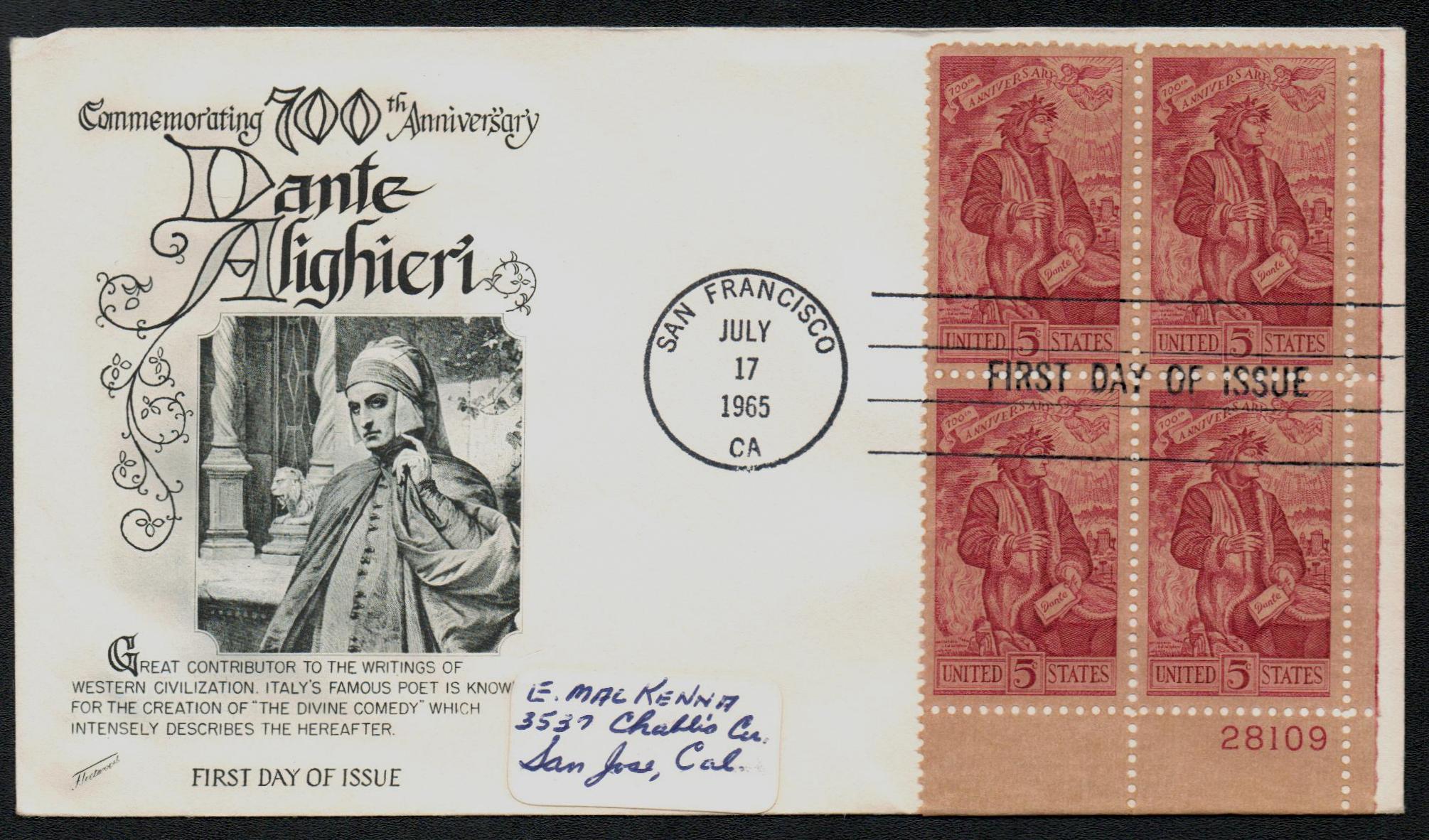
It was during his exile that Dante came up with the idea of his most famous work, the Divine Comedy. He wrote it between 1308 and 1321. The epic poem is divided into three parts – the Inferno, Purgatorio, and Paradiso. The poems are a fictional account of Dante’s travels through the realms of the dead – Hell, Purgatory, and Heaven – under the protection of spirit guides (Roman poet Virgil, and Beatrice, Dante’s “ideal woman”).
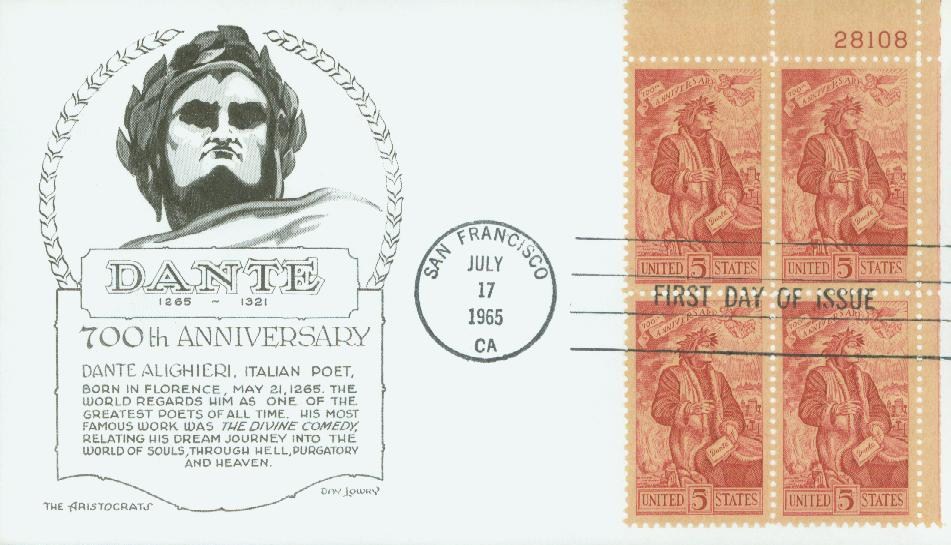
The poems also represented the Christian soul’s journey towards God. The writing had a profound impact on medieval theology, and its literary influence extends through modern times. It’s considered one of the greatest works of literature in the world. Dante was also noteworthy for blending science with religion, and his work is believed to have been a strong influence on Galileo, the “Father of Modern Science.”
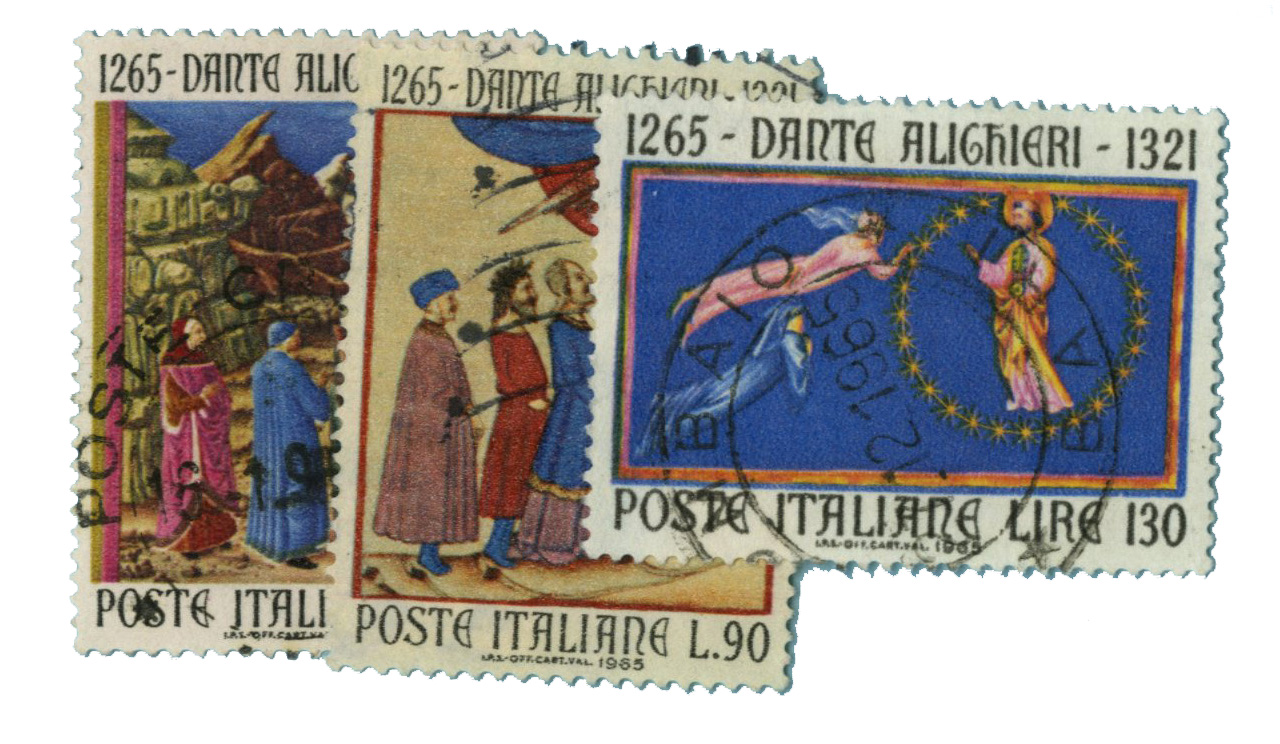
Dante completed his Divine Comedy in 1321. In September, he was returning from a diplomatic mission to Venice and died on September 13 or 14, possibly from malaria.
The Dante Alighieri Stamp
The US issued a stamp in 1965 to honor Dante’s 700th birthday. The stamp, designed in the style of early Florentine allegorical paintings, pictures Dante wearing a wreath (a symbol of poetry) before a background relating to his poem, The Divine Comedy.
Click here to read the Divine Comedy.
5¢ Dante Alighieri
City: San Francisco, CA
Quantity: 115,340,000
Printed by: Bureau of Engraving and Printing
Printing Method: Rotary Press
Perforations: 10 1/2 x 11
Color: Maroon on tan paper
Death Of Dante Alighieri
The author was born Durante di Alighiero Degli Alighieri around the year 1265 in Florence, present-day Italy. Not much is know about his early education, but it’s believed he received some formal education in grammar, language, and philosophy at one of the schools in Florence.
When he was nine years old, Dante claimed it was love at first sight upon seeing a girl named Beatrice. However, his parents had arranged his marriage to Gemma Donati. In his teens, he took an interest in writing and apprenticed with Brunetto Latini who introduced him to other Florentine poets. Dante entered the University of Bologna in 1287, but left two years later to join the Florentine army and fight in the Battle of Campaldino.

Though he had married Gemma in 1285, Dante still carried a torch for Beatrice. Her death in 1290 had a profound effect on him. He fully embraced Christianity and extensively studied the philosophical works of Boethius, Cicero, and Aristotle. He also began producing a significant amount of poetry, establishing his own unique poetic voice. Dante also became involved in the city’s politics, which were embroiled in a war between the White Guelfs and the Black Guelfs. Siding with the White Guelfs, Dante was eventually exiled to Verona and later Ravenna.

It was during his exile that Dante came up with the idea of his most famous work, the Divine Comedy. He wrote it between 1308 and 1321. The epic poem is divided into three parts – the Inferno, Purgatorio, and Paradiso. The poems are a fictional account of Dante’s travels through the realms of the dead – Hell, Purgatory, and Heaven – under the protection of spirit guides (Roman poet Virgil, and Beatrice, Dante’s “ideal woman”).

The poems also represented the Christian soul’s journey towards God. The writing had a profound impact on medieval theology, and its literary influence extends through modern times. It’s considered one of the greatest works of literature in the world. Dante was also noteworthy for blending science with religion, and his work is believed to have been a strong influence on Galileo, the “Father of Modern Science.”

Dante completed his Divine Comedy in 1321. In September, he was returning from a diplomatic mission to Venice and died on September 13 or 14, possibly from malaria.
The Dante Alighieri Stamp
The US issued a stamp in 1965 to honor Dante’s 700th birthday. The stamp, designed in the style of early Florentine allegorical paintings, pictures Dante wearing a wreath (a symbol of poetry) before a background relating to his poem, The Divine Comedy.
Click here to read the Divine Comedy.






